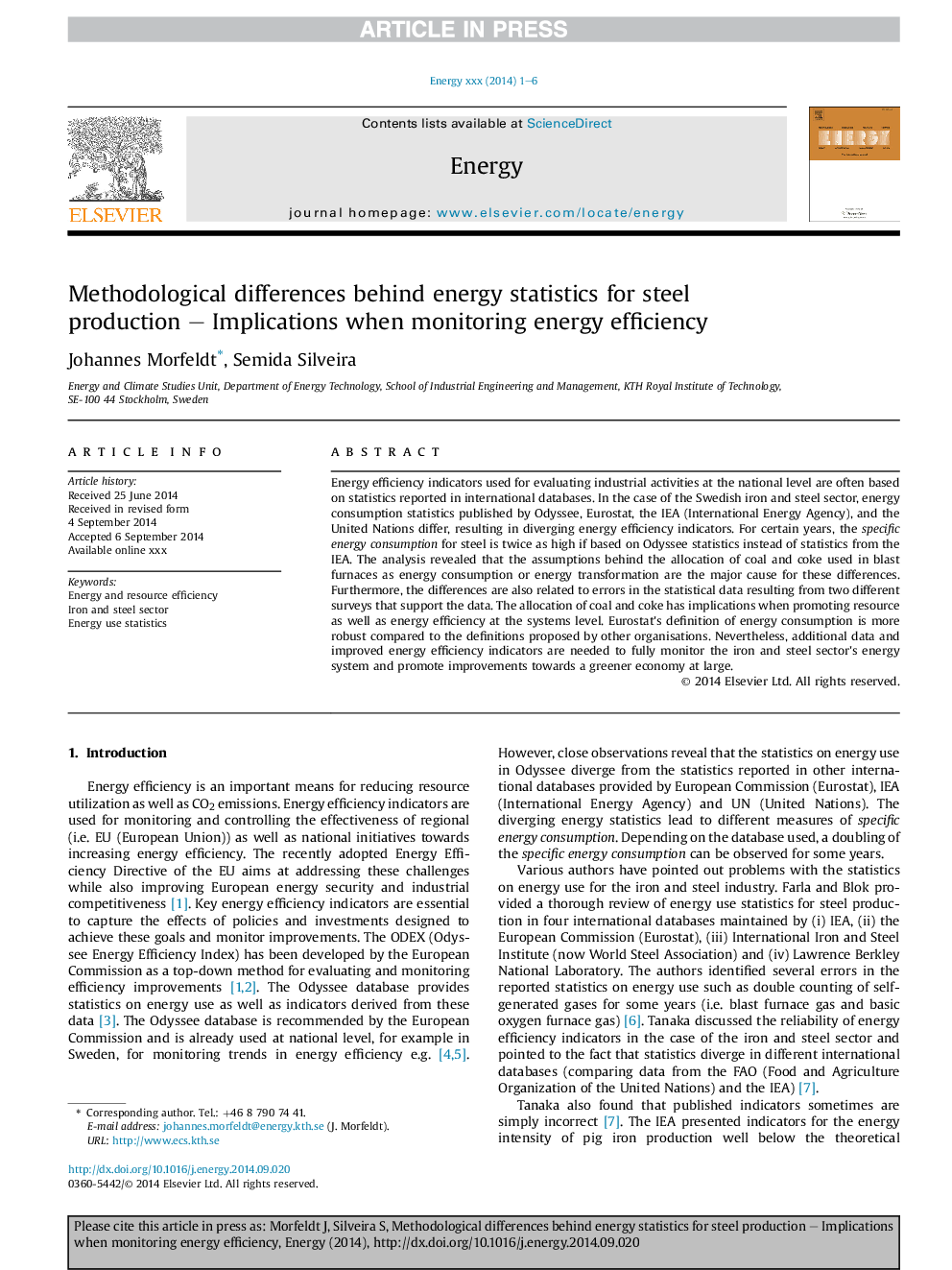| Article ID | Journal | Published Year | Pages | File Type |
|---|---|---|---|---|
| 8076376 | Energy | 2014 | 6 Pages |
Abstract
Energy efficiency indicators used for evaluating industrial activities at the national level are often based on statistics reported in international databases. In the case of the Swedish iron and steel sector, energy consumption statistics published by Odyssee, Eurostat, the IEA (International Energy Agency), and the United Nations differ, resulting in diverging energy efficiency indicators. For certain years, the specific energy consumption for steel is twice as high if based on Odyssee statistics instead of statistics from the IEA. The analysis revealed that the assumptions behind the allocation of coal and coke used in blast furnaces as energy consumption or energy transformation are the major cause for these differences. Furthermore, the differences are also related to errors in the statistical data resulting from two different surveys that support the data. The allocation of coal and coke has implications when promoting resource as well as energy efficiency at the systems level. Eurostat's definition of energy consumption is more robust compared to the definitions proposed by other organisations. Nevertheless, additional data and improved energy efficiency indicators are needed to fully monitor the iron and steel sector's energy system and promote improvements towards a greener economy at large.
Keywords
Related Topics
Physical Sciences and Engineering
Energy
Energy (General)
Authors
Johannes Morfeldt, Semida Silveira,
